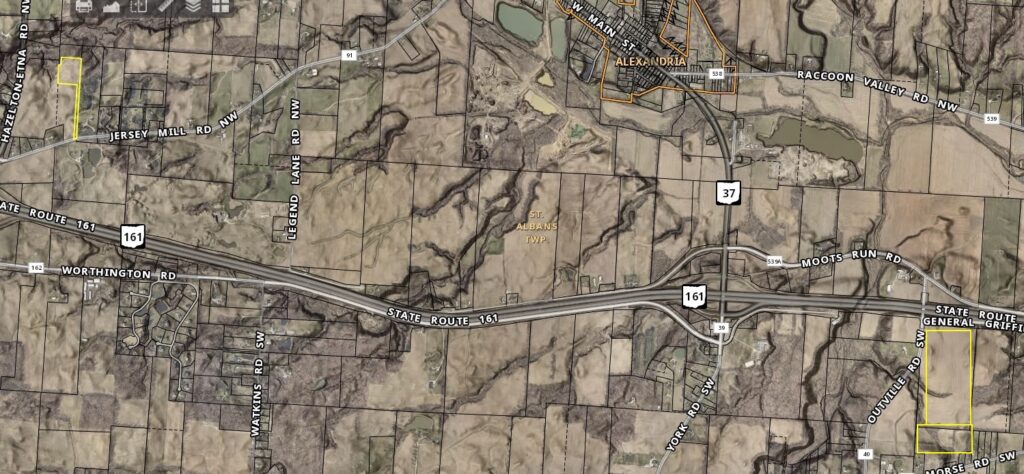Over the objections of area residents who spoke during a January public hearing, the Ohio Environmental Protection Agency this week approved the renewal of a permit for a wastewater treatment plant along Pet Run west of the Village of Alexandria in St. Albans Township.
The permit, which allows the proposed facility to discharge anywhere from 250,000 to 1 million gallons of treated wastewater per day into the small tributary of Raccoon Creek, was initially issued in 2019 to the Southwest Licking Water and Sewer District — now the Licking Regional Water utility. The permit was good for five years, but Licking Regional Water never constructed the plant.
Residents of St. Albans and neighboring townships spoke passionately against the permit renewal for Licking Regional Water District, during the public hearing that drew about 50 people, saying that discharge from the plant could be harmful to Pet Run and waterways downstream, such as Raccoon Creek.
“We’re keeping that option open as something we can include in our master planning and our big-picture vision” for providing sewage treatment in Rt. 161 corridor, said Jim Roberts, executive director of the utility. “We don’t know if or when that plant might happen, but having the permit gives us some flexibility.”
The new Pet Run permit is good through 2030.
The priority for the utility, Roberts said on April 10, is to build a much larger wastewater treatment plant on about 90 acres not far from Pet Run – just south of Rt. 37, east of Outville Road, and north of Morse Road.
Licking Regional Water District applied to the Ohio EPA early in 2024 for permits to treat up to 3 million gallons a day and discharge treated wastewater into Moots Run, another small tributary of Raccoon Creek.
“We’re addressing comments and questions they raised,” Roberts said. “It’s still moving through that process.”

He said the utility’s original plan was to start construction of the Raccoon Creek Wastewater Treatment Center in 2026, which could change based on variables such as the EPA’s timing on a decision about permits and how development occurs in western Licking County in the coming months and years.
“With Intel’s delay, will that slow down other development?” Roberts wondered, referring to Intel delaying the start of production at its $28 billion computer-chip manufacturing campus from 2025 to at least 2030. “We’ll keep moving through the process, and when development is needing the service from that plant, we’ll be in position.”
| Read more: Utility seeks renewal of permit that could allow it to operate two wastewater plants along Rt. 161 near Alexandria
Meanwhile, he said, the utility’s new water tower along Rt. 161 west of Rt. 310 is in place. The “bowl,” or tank, that sits atop a concrete tower, was lifted into place in the past month after being painted and emblazoned with the name of Jersey Township.
“It’ll probably be late summer or early fall before it’s operational,” Roberts said, noting that it will serve customers in the Rt. 161 corridor and southern Jersey Township. “We have some lines in the area, and we have projects on the books to service more of the area.”
Another water project, in southern Licking County, has made its way east along Rt. 40 to Rt. 37. Workers are now installing water lines along Rt. 37 from Rt. 40 to the I-70 interchange with Rt. 37.
Yet another big project by the utility is a new sewage treatment plant in Etna Township. The Wagram plant, as it is called, “should be operational in the spring,” Roberts said, and it will be the utility’s second wastewater facility. The original plant is on Gale Road, with a capacity of 4.3 million gallons of wastewater a day. The new plant will take some pressure off of the Gale Road plant and increase the Licking Regional Water District capacity to serve more customers, he said.
Alan Miller writes for TheReportingProject.org, the nonprofit news organization of Denison University’s Journalism program, which is supported by generous donations from readers. Sign up for The Reporting Project newsletter here.

